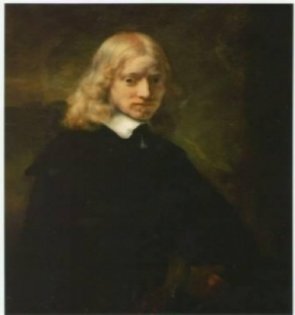
An Unknown Woman (No.31) by Follower of Rembrandt

Portrait of Pieter Six (No.25) by Rembrandt

Portrait of Violante Maria Spinola Serra (No.28) by Sir Peter Paul Rubens

An Unknown Woman (No.31) by Follower of Rembrandt

Portrait of Pieter Six (No.25) by Rembrandt

Portrait of Violante Maria Spinola Serra (No.28) by Sir Peter Paul Rubens



Created out of two smaller rooms in the 1930s during the 2nd Lord Faringdon’s extensive alterations to the house, the Dutch Room has a plasterwork ceiling and frieze made at that date in the Adam style, and an early nineteenth-century white marble chimney-piece.
Pictures
The room contains the most beautiful and renowned painting at Buscot: Rembrandt’s portrait (1655) of a man who is now identified, but not with certainty, as Pieter Six, the elder brother of the great Rembrandt collector, Burgomaster Jan Six (no. 25). The portrait of a woman, framed as a pair to it, was once thought to be a companion picture by Rembrandt, but is now attributed to his pupil, Ferdinand Bol.
To the left of the fireplace, the portrait by Peter Paul Rubens, Violante Maria Spinola Serra (no. 28), is an early work of about 1607, done in Genoa towards the end of the artist’s years in Italy. Other works here are by Jacob Jordaens (no. 22), a follower of Anthony Van Dyck (no.33), Gerrit van Honthorst (no. 65) and Matthias Withoos (no. 101).
Furniture
The set of six mahogany single chairs, two stools and settee, is of the Chippendale period, and is decorated with a Gothick fret pattern in low relief. The contemporary gros-point needlework covers are both signed and dated by the local ‘upholder’, S. Price of Gloucester Jany 12th 1771. The two satinwood commodes with concave fronts, inlaid with paterae, are closely related to Thomas Chippendale the Younger’s work in the neo-classical style of about 1785, and the satinwood commode on the wall opposite the door is of the same period.
Between the windows is an unusual pair of side-tables of around 1790, completely veneered with tortoiseshell, stained green and red. The oval mirrors above – in giltwood frames with festoons of husks, paterae and ribbons – are further examples of the Adam style.
At the far end of the room are a pair of fine inlaid cabinets, veneered with red-stained turtleshell and engraved bone. They were made in the mid 17th century in the Spanish Netherlands, though the stands are later, and the brass galleries are also likely to be a later addition.
On the early ninteenth-century writing-table are two early Qing vases and covers of the mid-seventeenth century. The set of rosewood and walnut occasional tables, the smallest having a chequerboard top, is probably by Gillows of Lancaster, dating from the Regency period. On one of these occasional tables is a royal seal in a silver case, presented to Stephen Sulivan (an ancestor of Lord Faringdon) by William IV in 1836, with a letter appointing him as Secretary to the British Legation at Lisbon. In front of the fireplace stands a pair of George III satinwood pole-screens with painted panels.
Ceramics and Objets d'Art
The bronzes on the chimney-piece include a pair of cupids, their late-eighteenth century ormolu plinths swagged with laurel baguettes in the Greek style fashionable during Louis XVI’s reign, as well as a group of three putti, all nineteenth-century French, and a pair of tritons, possibly derived from those on the Fontana del Moro in the Piazza Navona in Rome. The display table, recently commissioned from Thomas Messel, contains various objets de virtu.
On the tables between the windows are two yellow Worcester and one Paris cachepots, while below them is a pair of famille verte vases of the reign of Kangxi (1662–1722).